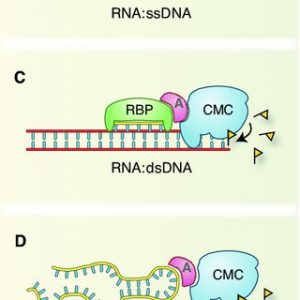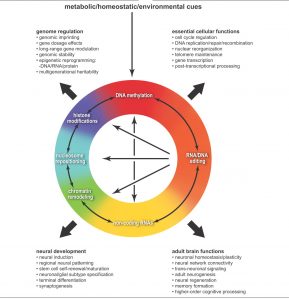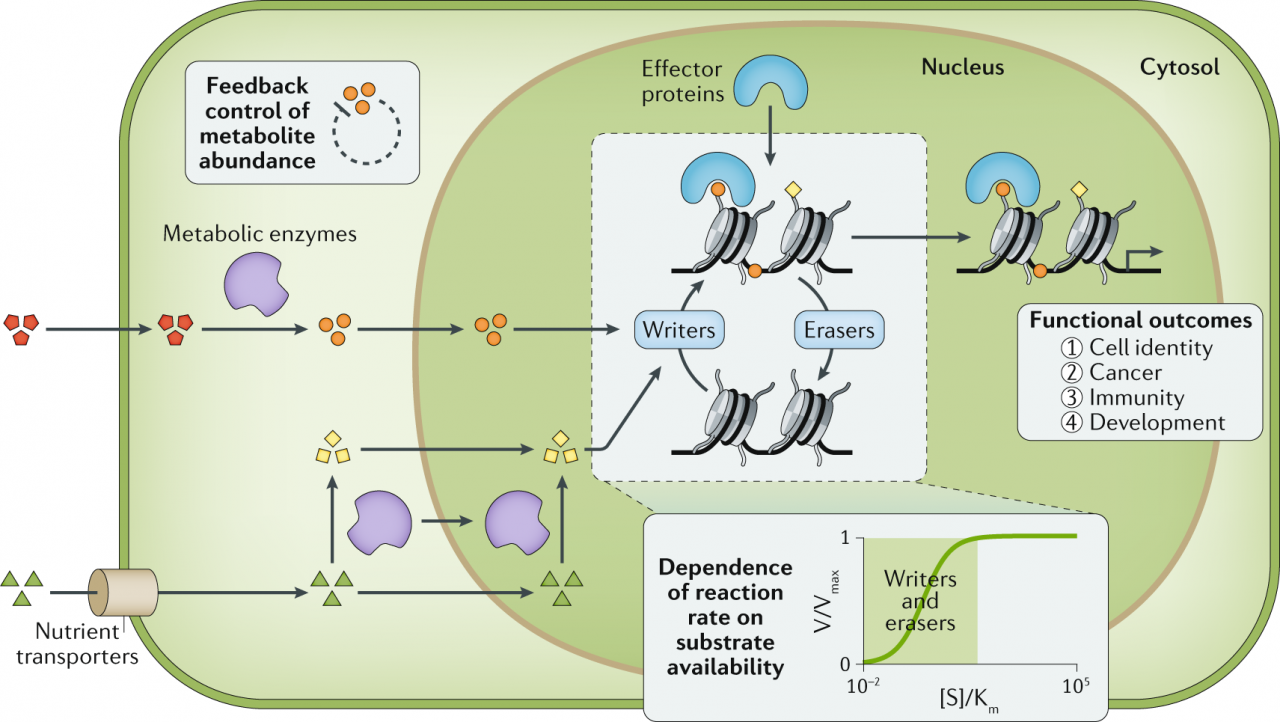Epigenetic modifications
Epigenetic changes can modify the activation of certain genes, but not the DNA sequence. Furthermore, chromatin proteins associated with DNA can be activated or silenced. This is the reason why the differentiated cells in a multicellular organism express only the genes that are necessary for their own activity. Histone modifications are epigenetic marks that affect gene expression patterns.
Abstract
Transcription, translation, and subsequent protein modification represent the transfer of genetic information from archival DNA to short-lived messenger RNA, usually with subsequent protein production. Although all cells in an organism contain essentially the same DNA, cell types and functions differ due to qualitative and quantitative differences in their gene expression.

Therefore, control of gene expression is at the core of differentiation and development. Epigenetics & Nuclear Signaling Recombinants processes, including DNA methylation, histone modification, and various RNA-mediated processes, are thought to influence gene expression primarily at the level of transcription; however, other steps in the process (eg translation) can also be epigenetically regulated. The following article will describe the role epigenetics is thought to play in influencing gene expression.
Epigenetics and gene expression
Transcription, translation, and subsequent protein modification represent the transfer of genetic information from archival DNA to short-lived messenger RNA, usually with subsequent protein production. Although all cells in an organism contain essentially the same DNA, cell types and functions differ due to qualitative and quantitative differences in their gene expression, and thus control of gene expression is at the core of differentiation. and the development.
Gene expression patterns that characterize differentiated cells are established during development and are maintained as cells divide by mitosis. Therefore, in addition to inheriting genetic information, cells inherit information that is not encoded in the DNA nucleotide sequence, and this has been called epigenetic information. Epigenetics has been defined as “the study of inherited mitotic (and potentially meiotic) alterations in gene expression that are not caused by changes in the DNA sequence” (Waterland, 2006).
However, some definitions of epigenetics are broader and do not necessarily encompass the heritability requirement. For example, the US National Institutes of Health (2009) in its recent initiative on epigenomics states that “epigenetics refers to both hereditary changes in gene activity and expression (in the progeny of cells or of individuals) as well long-term stable alterations”. in the transcriptional potential of a cell that is not necessarily heritable’.

Regardless of the exact definition, epigenetic processes that stably alter gene expression patterns (and/or mediate alterations in cell division) are believed to include: (1) cytosine methylation; (2) post-translational modification of histone proteins and chromatin remodelling; and (3) RNA-based mechanisms. Gene expression is a complex process involving numerous steps (Alberts et al., 2008) and although a detailed description of gene expression is beyond the scope of this review, we will briefly summarize the main steps to locate the subject of the review. , how epigenetics interacts with gene expression, in context.
The initial step in gene expression is the transcription of the DNA molecule into an exact copy of RNA. To initiate transcription, RNA polymerase binds to a particular region of DNA (the promoter) and begins to produce an mRNA strand that is complementary to one of the DNA strands. Post-transcriptional processing is critical: a methylated guanosine “cap” is added to the 5′ end of the transcribed RNA, while mRNA splicing occurs through a stepwise series of cleavage and ligation events that remove intron sequences and they join the exons in an appropriate way.
After splicing, the 3′ end of the mRNA is cleaved and a chain of adenosine residues, known as the polyA tail, is added in preparation for transport of the mRNA from the nucleus to the cytoplasm. At this stage, the mRNA is ready to bind to ribosomes for translation. In translation, polypeptides are synthesized sequentially stepwise from the N-terminus to the C-terminus through three distinct steps: initiation, elongation, and termination.

